Immediate Information Is Key To Conquering Soaring Costs, Rising Demand And Decreasing Manpower.
By Kerry Dougan and Diego Larrea-Puemape
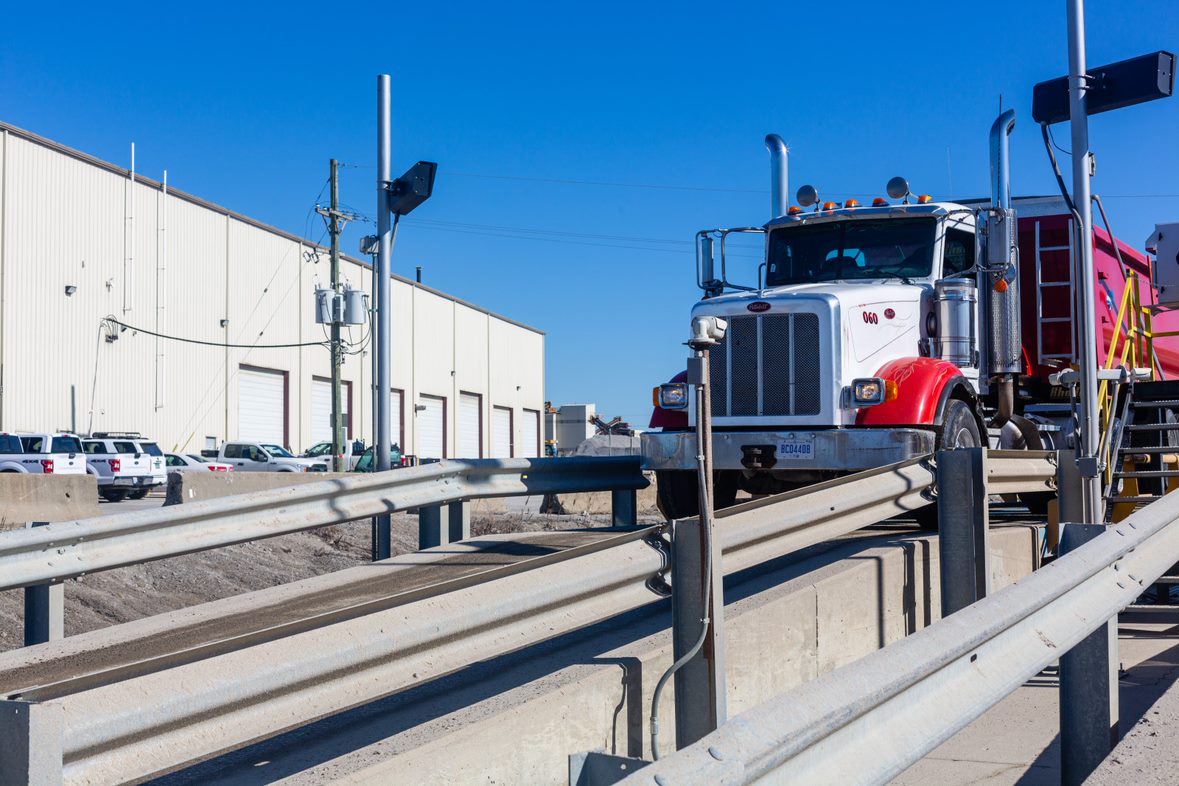
The Infrastructure Investment and Jobs Act (IIJA) is pumping unprecedented funding into construction projects across the country. While this is all positive, this will result in materials producers being hit with a historically high volume of demand for materials in the midst of a crippling labor shortage.
A major kink in the heavy building materials supply chain is trucking and has been for many years. The driver shortage has been a major hurdle for nearly a decade, and it is being exacerbated by this significant demand, competition with other industries to recruit and retain employees, rising fuel costs and new environmental regulations.
Many arduous processes plague the construction industry, such as data silos, process invisibility and fragmentation, making it nearly impossible to track progress. The industry is realizing that sharing real-time data is crucial for success.
When working entirely around outdated information, producers can make mistakes that dramatically affect the profitability of a job but, when working from consistent, accurate data, guesswork and poor decision-making are greatly reduced. To be successful during this time, producers must add real-time data to the management mix to improve production efficiency and productivity while also monitoring power consumption and emissions.
Real-time data allows teams to stay up-to-date with the job status and any issues that may arise. Identifying these issues early on allows management to adjust their plans to resolve issues before they cause real damage. Having data flow through systems can help team members learn from patterns and optimize workflows to get the best possible results and the information gathered can be utilized to derive useful insights for future growth.
Drive Efficiencies From the Moment a Truck Enters the Yard
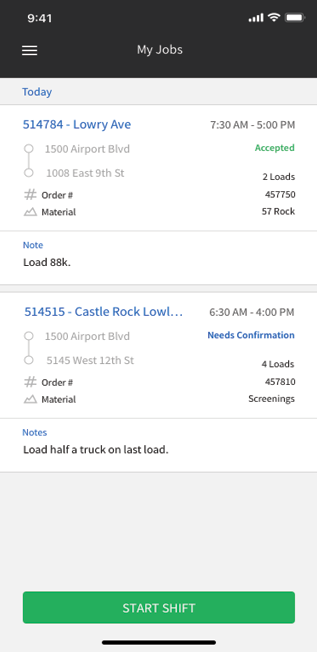
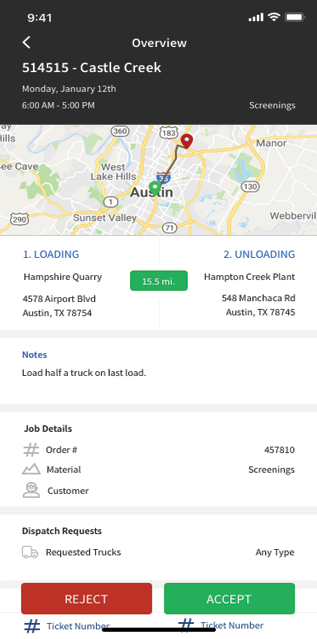
Once on site, drivers can check in their vehicles one of two ways: an efficient way, or an inefficient way. Drivers can pull up to the weighbridge and either check in manually or use the check in window if available. At this point, the dispatcher would enter his vehicle number into the system and all his details would populate on the computer. They would then inform the driver of his load and send him in to the quarry.
A more efficient way to do this is to install a form of automated identification and use the technology to guide him through the quarry. This configuration provides huge time savings benefits and also improves health and safety records by keeping the drivers in the trucks at all times. However, complexities arise in the automated check-in process when it comes to third-party haulers.
With third-party haulers, there isn’t always visibility into which vehicle from the broker will be picking up a particular order and when. Typically, a broker will send a certain number of trucks for the day; when the trucks show up, the scale operator does not know in advance which truck is going to be picking up which order, so the drivers have to go through a check-in process so that their trucks can be associated with an order.
That means that a scale operator has to manually associate them in their ticketing system with the order. This process eats up a lot of time and slows down the beginning of the day, which is usually the busiest time of the day.
By integrating the scale ticketing and dispatching software with a third-party trucking management solution, like Command Alkon’s integration between Apex and Ruckit, the quarry personnel can communicate with brokers through the tool, get advance awareness of which vehicles are being assigned, and can push that information to the ticketing and dispatch system so that all vehicles are preassigned and do not require interaction with quarry personnel upon arrival.
After being loaded, vehicles proceed to the scale house. With a digital solution, the scale is linked to a computer system. The ticket would print the correct weight, and tickets would no longer have to be adjusted. An alternative, which is made possible through Command Alkon’s CONNEX Platform, is that once the ticket is created at the scale, the ticket can automatically be fed to the driver’s mobile application in a digital format on his phone or tablet.
Automating these processes can improve customer service, provide a common system that allows employees to manage the business from quote through to collection, reduce the risk of under and overweighs by having the scale head linked directly to the software, automate invoice on completion of jobs – and, from a management level, access the entire operation at any time.
Stay in the Know While Trucks are On the Go
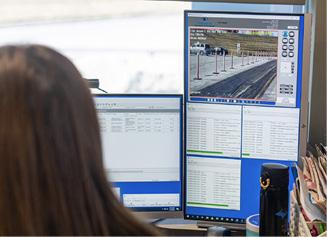
Truck fleets average about a 25% increase in fuel economy. Trucking management solutions help to shorten drive times with optimized routes so that less fuel is used. Solutions like these can map truck locations in real time so that managers will know when a load will arrive at the jobsite or at the plant. The yard can be cleared prior to delivery so that trucks do not sit and idle, releasing CO2 into the environment, while they wait to unload.
Another great way to cut carbon emissions is to optimize truck usage by reducing empty-bed time. By creating geofences for loading and unloading locations, systems like this can provide visibility into how long trucks are spending on those sites. Clear visibility into traceability of material properties and orders ensures that products arrive in the best possible quality, reducing delays and productivity lags.
Businesses can ensure complete delivery and materials traceability and uncover smart insights for decision-making with connected logistics solutions. Drivers have the information they need at their fingertips, including their next ticket, so they can be back on the road to their next job as soon as their current delivery is made.
To create more efficient fleet operations, companies are using tracking solutions to map the location of trucks in real time, as well as telematics devices to monitor truck performance parameters. Once management understands the cause of nonproductive hours in their operations, they can revamp processes for greater efficiencies, including using route planning and mapping solutions to avoid traffic delays.
Knowledge From Field, Right at Your Fingertips
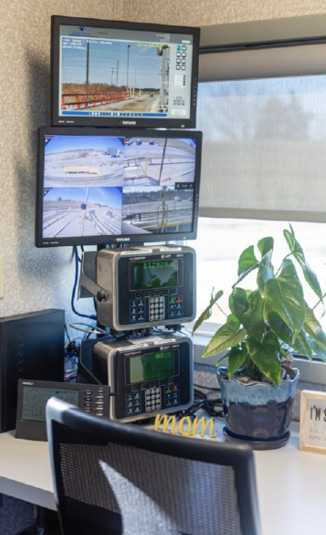
As mentioned, working from real-time data is imperative in making informed business decisions. A seamless flow of data can be made possible through electronic ticketing (eTicketing). When exchanging an eTicket, the load data stays in sync with a load’s journey, providing an up-to-date delivery status. The order information flows from the time the order is made all the way to the time that it makes it to the jobsite or plant.
Exchanging electronic tickets is more cost-effective than working entirely from paper ticket processes. Most organizations that still manage paper tickets have one person or multiple people whose hands are tied up in hours of digging through huge bins of tickets that they must manually scan or key in before filing away. Retrieving electronic tickets and attaching them to invoices is so much quicker and removes time needed to manually upload into the system, allowing personnel to focus on areas of the operation that need more attention.
While the back office greatly benefits from electronic tickets, a variety of personnel also rely on eTicket data to effectively perform their job. Dispatch gets real-time visibility of the material enroute, and plant managers or contractors in the field can verify proof of delivery and know the exact amount delivered.
Project managers, dispatch, and other team members can view daily job costs to manage budgets, and drivers can be paid quickly and fairly. Now that anachronistic paper workflows are a thing of the past, drivers don’t have to stress about keeping track of tickets in a bin or losing a ticket while traveling.
We Can’t Keep Waiting – The Time to Incorporate Change is Now
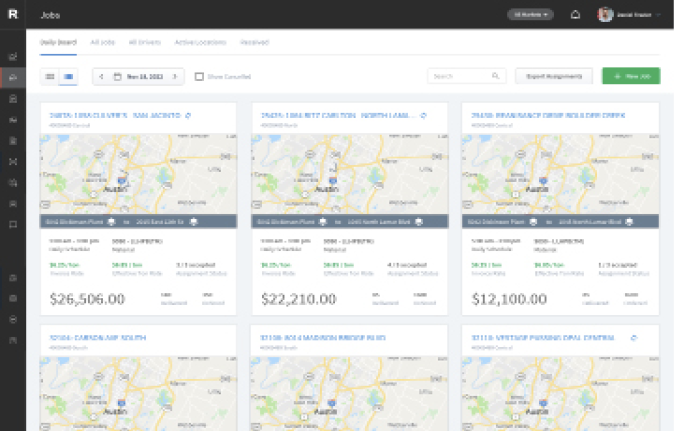
Apex + Ruckit daily board job cards. 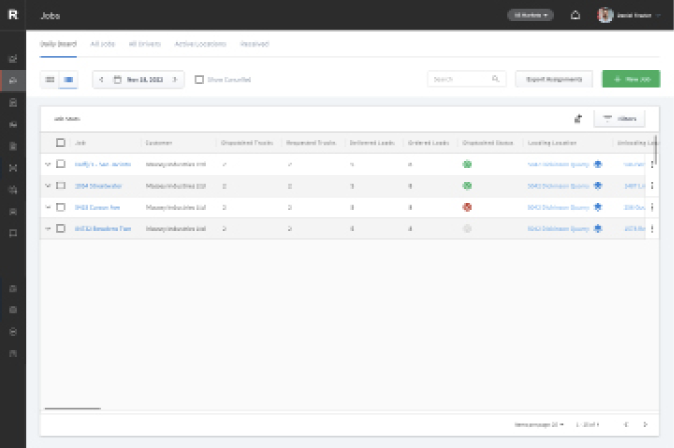
Apex + Ruckit daily board job stats dispatched status column.
Solutions like these are readily available, and the time to incorporate them is now. The IIJA includes money for advanced digital construction-management systems and related technologies. The program is funded at $20 million per year, for a total of $100 million, over five years.
This funding is a clear indication of the critical role that technology will play in designing and building better, cost-effective infrastructure. A boom in U.S. construction will play a major role in reviving a battered global economy, and it’s time to empower limited workers with solutions that help them to work more productively and avoid pitfalls and schedule delays to make the most of this investment.
Kerry Dougan serves as the aggregates market manager and Diego Larrea-Puemape serves as the general manager of Ruckit at Command Alkon. For more information, visit www.commandalkon.com.
